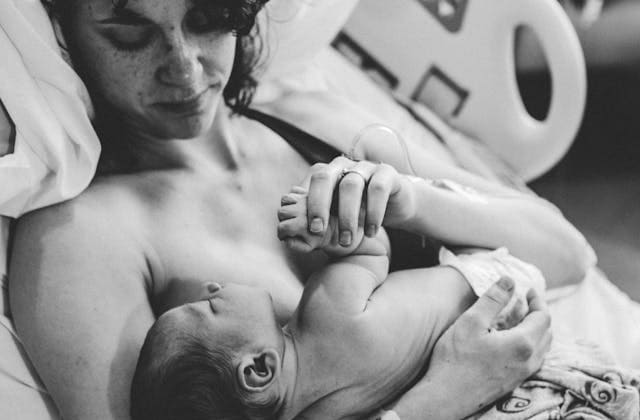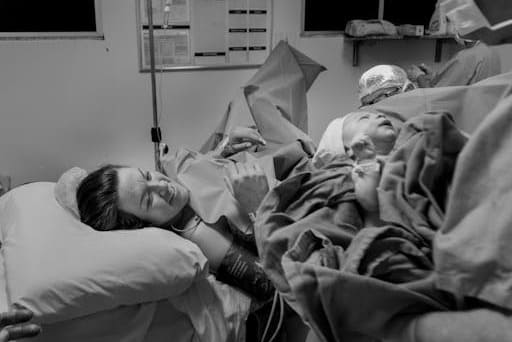Breastfeeding After C-Section: Essential Tips
Bringing a baby into the world via cesarean delivery is a powerful act—but it comes with unique challenges, especially when it comes to breastfeeding. If you’re feeling overwhelmed, worried about milk delays, or unsure how to latch without pain, you are not alone. This guide offers evidence-based advice and gentle reassurance for parents navigating nursing after a C-section.

Why C-Section Breastfeeding Feels Different
After a vaginal birth, breastfeeding hormones surge with the help of natural labor. Cesarean sections; particularly scheduled or emergency ones; can interrupt this hormonal sequence.
The Science of Delay
According to WHO and Cochrane reviews, surgical births can affect the release of oxytocin and prolactin; key hormones for let down and milk production. Anesthesia, stress and postoperative pain can further delay the initiation of lactation. Your abdominal incision needs healing time, which affects how you can position yourself and your baby during nursing sessions.
“I remember staring at my baby and wondering why I wasn’t overflowing with milk like I’d expected. I thought I was failing. But it came—slowly but surely.” — Maya, first-time mom
“I was exhausted and drugged up, but skin-to-skin helped me bond and eventually feed. The support made all the difference.” — Jonah, partner of a C-section mom
Emotional Landscape
Cesarean recovery often includes guilt, disappointment, or pressure to “bounce back.” Recognize these feelings as valid. Feeding your baby; by breast, bottle or both; is never a failure. Progress over perfection is the goal.
Positioning Mastery: Protecting Your Incision
Choosing the right breastfeeding position can make the difference between struggle and comfort. The right hold avoids incision pressure and supports a deep latch.
1. Football Hold (aka Clutch Hold)
-
Tuck your baby under your arm, like a football
-
Use a firm pillow or rolled blanket to raise your baby to nipple height
-
Support the baby’s neck with your hand, guiding the latch
Pain-Free Tip: Place a small pillow or folded towel between baby’s feet and your stitches.
2. Side-Lying Position
-
Lie on your side with your baby facing you
-
Use pillows to support your head and back
-
Help your baby latch while lying tummy-to-tummy
Getting In and Out of Bed Safely:
-
Roll to your side first
-
Use your arms to push yourself up
-
Swing your legs over the bed edge, avoiding core strain
3. Laid-Back (Biological Nurturing)
-
Recline in a supported chair or bed
-
Place baby on your chest, belly-down
-
Let gravity help with positioning and latch
4. Partner-Assisted Cradle Hold
-
Sit upright with good back support
-
Have your partner help position the baby or support baby’s body
-
Use a nursing pillow to minimize strain
Managing Pain and Discomfort
Comfort is essential for successful breastfeeding. Here’s how to minimize pain:
-
Take Your Pain Medication: Don’t suffer through pain thinking it’s better for breastfeeding. Most pain medications prescribed after C-sections are safe for nursing mothers. Pain actually inhibits milk production, so staying comfortable helps your supply.
-
Use Ice and Heat: Apply ice packs to your incision area (not while nursing) and warm compresses to your breasts if you experience engorgement.
-
Support Your Incision: When coughing, laughing, or moving, hold a pillow against your incision for support. This technique, called “splinting,” reduces pain and helps you move more confidently.
-
Time Your Nursing: Take pain medication 30-60 minutes before nursing sessions when possible, so you’re most comfortable during feeding time.
DOs and DON’Ts
DO:
-
Use pillows strategically
-
Take your time
-
Ask for partner or nurse help
DON’T:
-
Let baby’s feet kick your incision
-
Hunch forward while feeding
-
Skip pain relief before a session
8 Questions to Ask Your Hospital
-
Can I do skin-to-skin in the OR?
-
Is there a lactation consultant available 24/7?
-
Will you delay baby’s first bath for better latch and bonding?
-
Can I room-in with my baby post-op?
-
What is your BFHI (Baby-Friendly Hospital Initiative) status?
-
Can I bring my own breastfeeding pillow or binder?
-
Do nurses support pumping if direct latch is delayed?
-
Can my partner help with positioning during recovery?

Final Thoughts: You’re Doing Better Than You Think
Breastfeeding after a cesarean is not a one-size-fits-all path. You may face delays. You might pump, supplement or switch positions daily. That’s not failure; that’s flexibility and resilience. With the right information, support system and tools, you can nourish your baby and recover with confidence.
Your C-section delivery doesn’t define your breastfeeding journey; your determination, the right support and evidence-based strategies do. Be patient with yourself as you heal and learn this new skill together with your baby.
“Your journey is unique; aim for progress, not perfection!”





